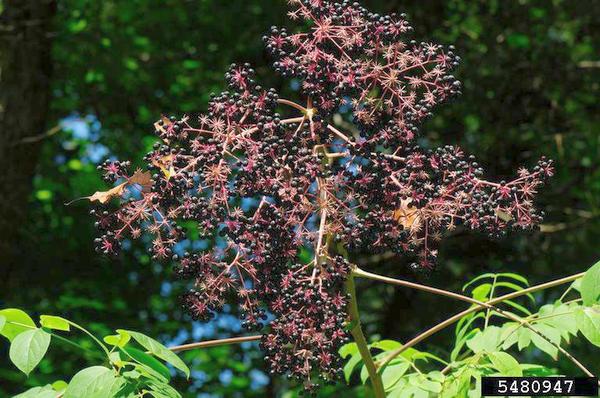
Travel puts nutrition demands on birds in migration. What’s on the menu for birds that eat fruit? Here’s what they’ve been eating lately in Pittsburgh’s Schenley and Frick Parks.
Number One on the menu in our city parks is Japanese angelica (Aralia elata) a look-alike to our native devil’s walkingstick (Aralia spinosa) shown at top. The picture above shows a beautiful full fruit cluster but you can’t find these after the warblers have been here. The tops of the plants end up with empty pink stems and a few berries. Here’s one in Schenley Park, looking up from below.
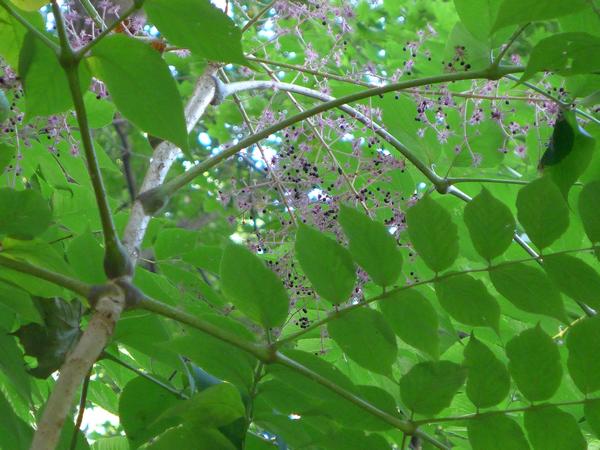
Another favorite are these tiny black cherries (Prunus serotina). Ripe cherries have been falling from the trees since late August. By now many black cherry trees have been stripped of their fruit by large flocks of American robins and cedar waxwings.
Invasive species are also on the menu. Amur, bush and the other alien honeysuckles have showy red berries.
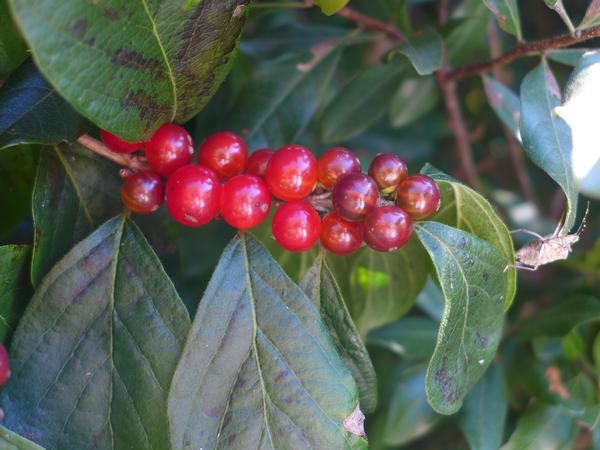
Porcelain berry, another invasive, is a favorite with cedar waxwings.
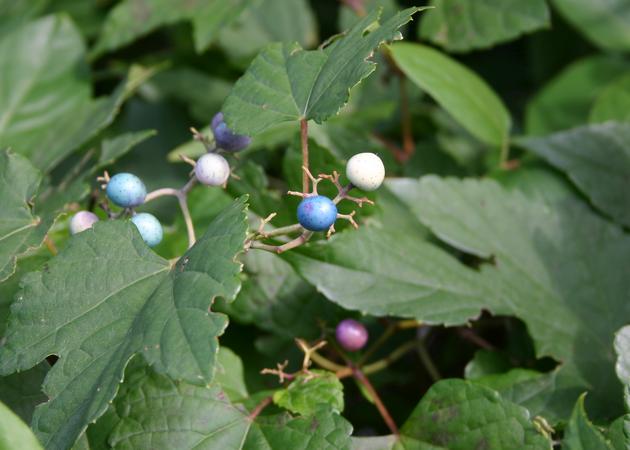
I don’t know if these wild grapes are native or alien, but they sure look good for birds.
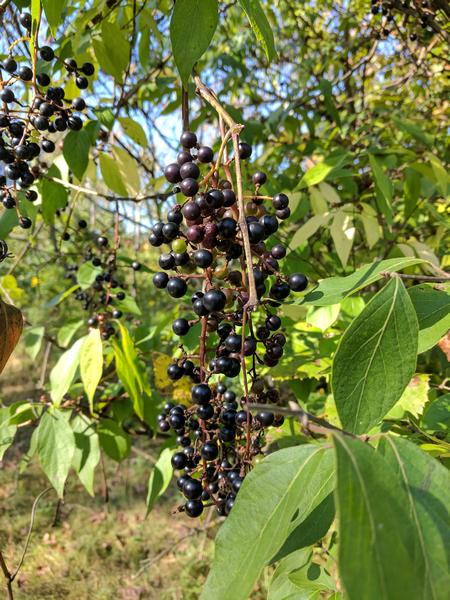
And here are two native species …
Pokeweed (Phytolacca americana) and …
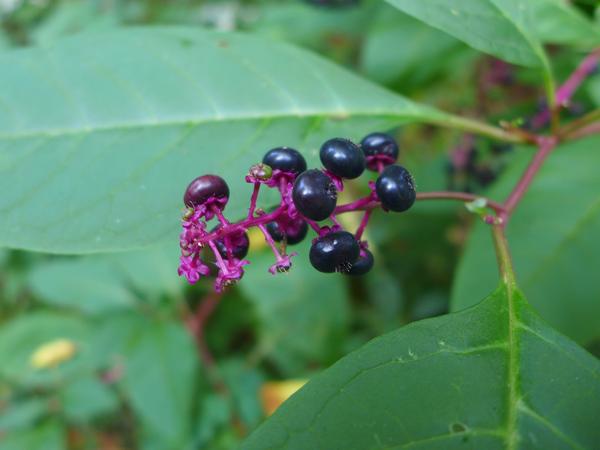
… spicebush (Lindera sp.), an especially nutritious fruit that’s a favorite of wood thrushes and veeries. There’s a lot of it along the Upper Trail at Schenley Park.
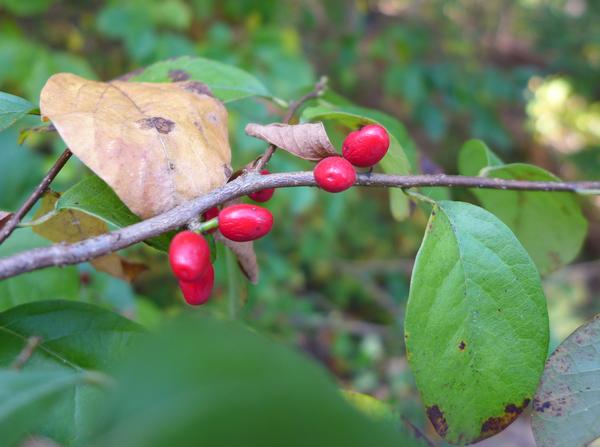
The plants have laid out a feast for the birds so their fruit will be eaten and their seeds dispersed during migration.
(photo credits: Devil’s walkingstick by Vern Wilkins, Indiana University via bugwood.org; Black cherries from Wikimedia Commons. All other photos by Kate St. John)
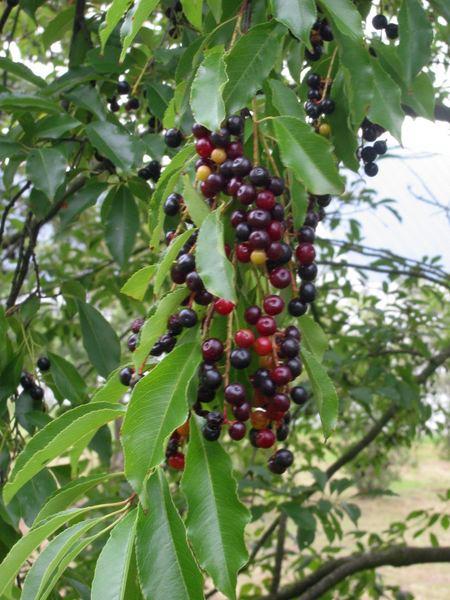
This is off-topic, but I need advice. I want to buy a really good pair of binoculars. The ones I use now have never been satisfactory. So, what should I look for? What power, what brand?
Peggy, there is no one-size-fits-all answer. Birdwatchers’ Digest is a good place to start to narrow your serch. See:
Birdwatchers’ Digest: A Buyer’s Guide to Binoculars
What about Holly berries?
Joyce, yes holly berries. We don’t have any in Schenley Park (at least that I have seen) so I couldn’t photograph them. There are so many fruits I couldn’t list them all!
I’ve noticed the robins going for the holly berries. We used to have several black
cherry trees and could always tell when the birds were eating the cherries. The
steps and any car parked in the driveway would be a mess. Unfortunately they
also attract carpenter ants.